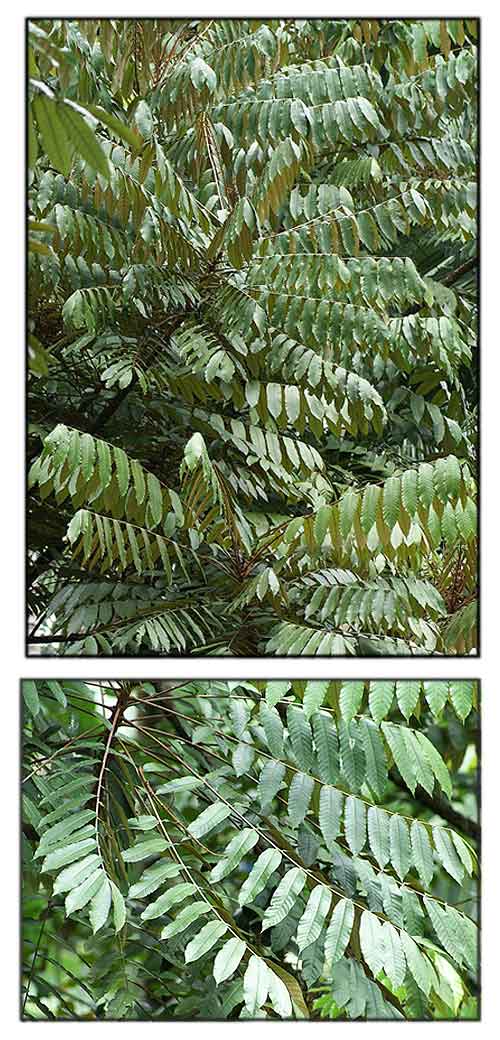
Family • Meliaceae
Tukang-kalau
Aglaia pachyphylla Miq.
KOPING-KOPING
| Scientific names | Common names |
| Aglaia barbatula Koord. & Valeton      | Makaasim (Tag.) |
| Aglaia clarkii Merr.      | Tukang-kalau (Tag.) |
| Aglaia megistocarpa Merr.      | |
| Aglaia pachyphylla Miq.      | |
| Aglaia pachyphylla Miq. is an accepted species. KEW: Plants of the World Online | |
| Other vernacular names |
| INDONESIA: Siluwar (Sundanese, Java); Singkok (Kalimantan). |
| MALAYSIA: Semeliang (Peninsular); Langsat-langsat, Koping-koping (Sabah), Guijo. |
November 2024
![]()
 |
| Â Â Â Â Â Â Â Â Â Â Â Â Â Â Â Â Â Â Â Â Â Â Â Â Â PHOTOS / ILLUSTRATIONS |
| IMAGE SOURCE: Aglaia pachyphylla (2 images) / © Marina Khaytarova / Non-commercial use / Image modified / Click on image or link to go to source page / Trees of Tropical Asia |
Additional
Sources and Suggested Readings |
• |
DOI: It is not uncommon for links on studies/sources to change. Copying and pasting the information on the search window or using the DOI (if available) will often redirect to the new link page. (Citing and Using a (DOI) Digital Object Identifier) |
| Â Â Â Â Â Â Â Â Â Â Â Â Â Â Â Â Â Â Â Â Â Â Â Â Â Â Â Â Â Â List of Understudied Philippine Medicinal Plants |
| Â Â Â Â Â Â Â Â Â Â Â Â Â Â Â Â Â Â Â Â Â New plant names needed The compilation now numbers over 1,500 medicinal plants. While I believe there are hundreds more that can be added to the collection, they are becoming more difficult to find. If you have a plant to suggest for inclusion, native or introduced, please email the info: scientific name (most helpful), local plant name (if known), any known folkloric medicinal use, and, if possible, a photo. Your help will be greatly appreciated. |
• |
 |


